Often laptops have two graphics cards for performance and power consumption management.
In this configuration, one of the graphics cards is used for light applications and thus conserves power, whereas the second is used when heavier applications are being run.
The graphics card intended for low-key tasks, like word processing, and for battery conservation is called the integrated graphics card. The graphics card intended for demanding tasks, like gaming, is called the dedicated graphics card.
Dedicated graphics cards have a much better graphics processing performance than integrated graphics cards, but they consume more power.
Also, you MUST note that NOT ALL laptops have dual graphics cards. In the following text, I will discuss in detail “Why do laptops have two graphics cards?”.
TABLE OF CONTENTS
Integrated vs. Dedicated Graphics Cards on Laptops
Essentially, there are two types of graphics cards that you can find on a PC, integrated and dedicated graphics cards.
Integrated graphics, as the name suggests, are graphics processing units that are built INTO the CPU chip itself. They cannot be removed or upgraded. Integrated graphics are weak and offer limited processing capability but consume far less power.
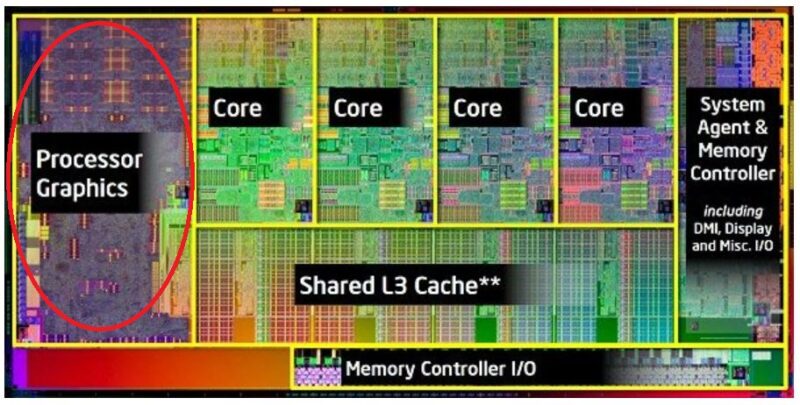
Dedicated graphics cards on laptops, on the other hand, are separate standalone chips soldered onto the laptop’s motherboard itself.
The image below shows two chips on a motherboard. The one on the left is the CPU, and the one on the right is the dedicated graphics.
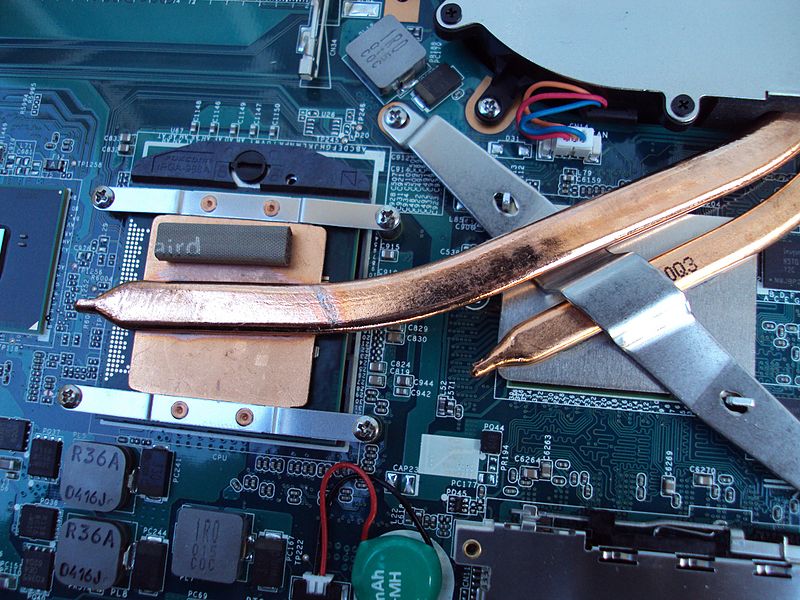
Performance Difference Between Integrated and Dedicated GPUs
There is a vast performance difference between integrated graphics and dedicated graphics cards.
Dedicated graphics cards can be multiple-folder than iGPUs for graphics processing, depending upon your model.
The following table and graph show how the integrated graphics compared with the dedicated graphics cards. The scores are taken from the G3D Mark benchmark.
| GPU | G3D Mark | Notes |
| Intel UHD 630 | 1395 | As found on 8-10th Gen Intel CPUs |
| Nvidia GeForce GT 740 | 1543 | Dedicated GPU Basic |
| Intel UHD 750 | 1684 | As found on 11th Gen+ Intel CPUs |
| AMD Radeon Vega 8 (2018 Version) | 1704 | AMD 2000 Series APU |
| Intel UHD 770 | 1928 | As Found on 12th Gen Intel CPUs. |
| Intel Iris Pro 580 | 2044 | Found on premium laptops. |
| Nvidia GeForce GT 1030 | 2613 | Dedicated GPU Entry Level |
| AMD Ryzen 5 5600G Vega 7 Graphics | 2639 | Integrated as found on the Ryzen 5600G |
| AMD Ryzen 7 5700G Vega 8 Graphics | 2708 | Integrated as found on the Ryzen 5700G |
| AMD Radeon RX 550 | 2764 | Dedicated GPU Entry Level |
| NVIDIA GeForce GTX 1060 | 9875 | Dedicated GPU Lower-Mid Range |
| NVIDIA GeForce GTX 1060 | 10879 | Dedicated GPU Mid-RangeNVIDIA |
| NVIDIA GeForce RTX 2080 | 18652 | Dedicated GPU High End |
| NVIDIA GeForce RTX 3080Ti | 26429 | Dedicated GPU High End |
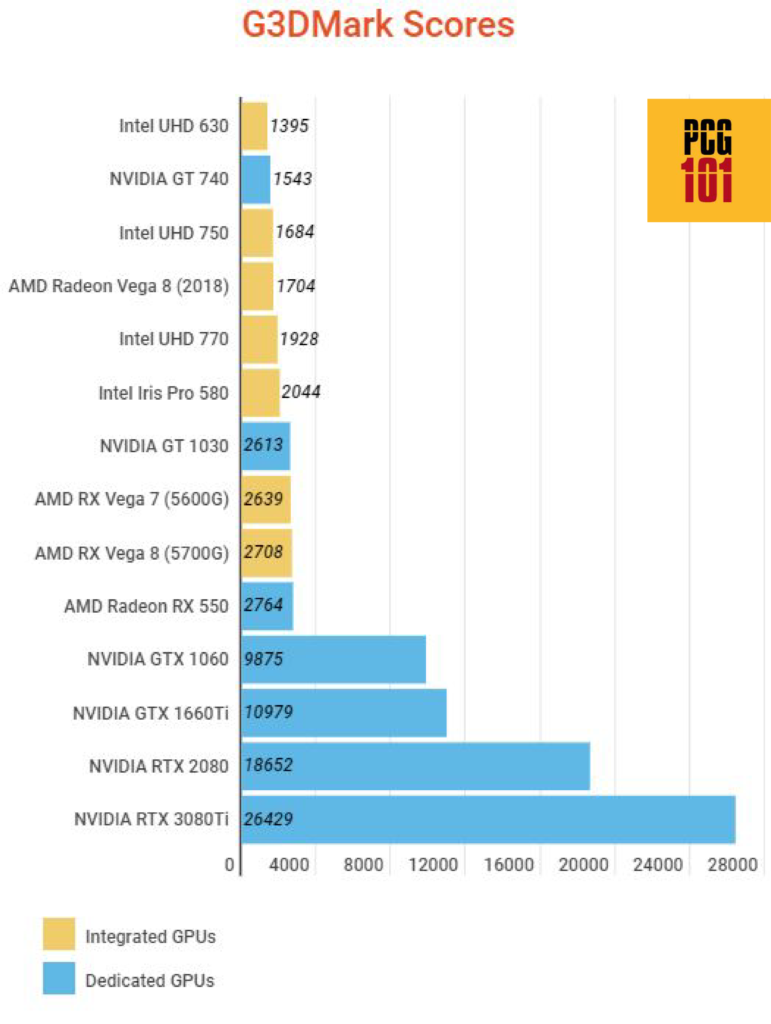
As you can see above, even the best iGPUsfound on the AMD Ryzen 5700G is far from the mid-range NVIDIA GTX 1660, let alone the top-of-the-line NVIDIA RTX 3080Ti graphics cards.
The point of this discussion is that dedicated graphics cards are intended for brute-force graphics processing. They are more potent than iGPU; hence if you plan on gaming and doing editing or designing work on your PC, the dedicated graphics card will help tremendously.
Also, a key point to note
Not all laptops have two graphics cards. While all laptops have integrated graphics, they may or may not have a dedicated GPU.
Hence if your laptop has a dedicated graphics card, consider yourself lucky.
So Why Do Laptops Have Two Graphics Cards?
Laptops often have integrated and dedicated graphics cards for power and performance management. Essentially, the reasons for having two graphics cards include the following:
- Conserving Battery Power
- Limiting Heat Generation from Dedicated GPU
- High-Performance Graphics Rendering When in Need
1. Conserving Battery Power
Having an integrated graphics card helps conserve the laptop’s actual battery charge.
As such, when you remove the laptop from the wall socket, the integrated graphics card takes over, and the dedicated graphics card generally gets disabled.
An integrated graphics card consumes a fraction of the power the dedicated graphics card needs.
2. Limiting Heat Generation
Dedicated graphics cards generate a lot of heat when running.
Therefore, an integrated graphics card manages the heat option and keeps things cool when the task is menial.
For instance, when running simple programs or tasks like MS Word, YouTube, or simply surfing on Chrome, the integrated graphics limit the heat generation (as well as conserve the power used).
The dedicated graphics card takes over when running heavier tasks like games or professional editing and designing applications.
3. High-Performance Graphics Rendering When in Need
As explained above, a dedicated graphics card provides graphics processing power when in need.
Since dedicated GPUs are far more powerful compared to iGPUs, they are used when performing heavier tasks like gaming.
The Switching is Done Automatically
So that you know, the switching between the integrated and dedicated graphics card is done automatically.
The OS is smart enough to realize which application is low demanding and which is highly selective.
You Can Check Which GPU is Being Used for What Task
As a side note, you can also check which graphics are used for what task.
The video below explains this:
You can check what graphics card is used through the task manager in the Processes tab and the GPU Engine column.
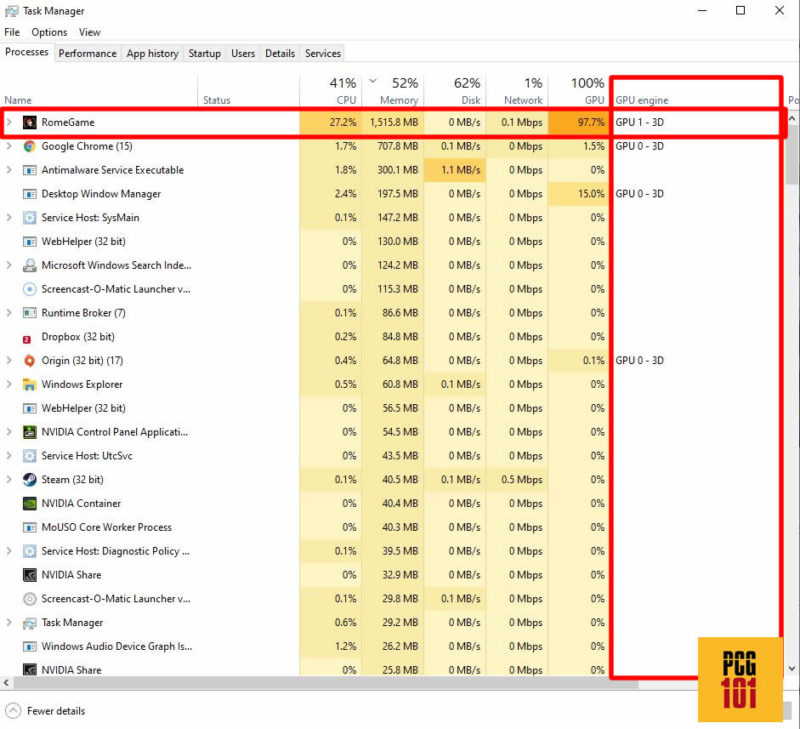
Read in Detail: How to Check Which Graphics Card is Being Used?
How to Figure Out Which One is Integrated or Dedicated GPU?
It is difficult for the uninitiated to figure out which of the two graphics cards on your laptop is integrated and which is dedicated.
Take, for instance, the screenshot from my device manager below:
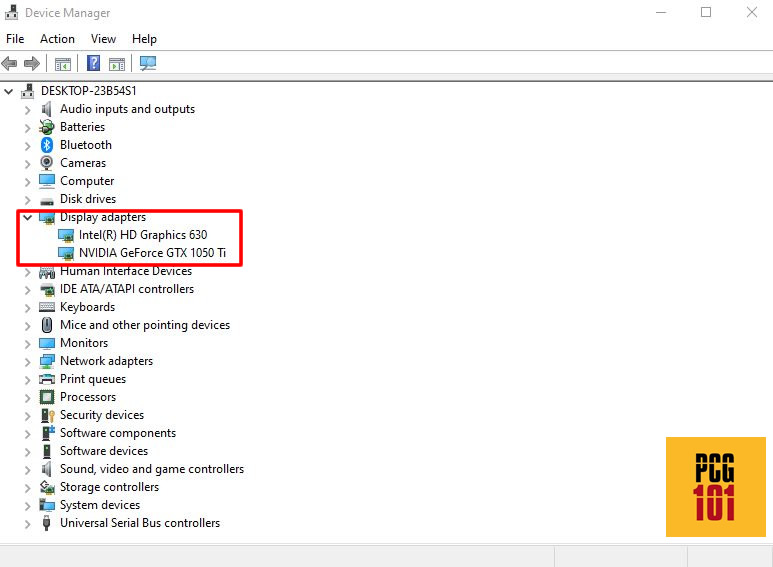
I can see that I have two graphics cards (aka display adapters) on my laptop:
- Intel HD 630
- NVIDIA GeForce GTX 1050Ti
So which one of the two is integrated graphics, and which is dedicated? To understand, you need to become familiar with the GPU market.
There are three powerful graphics chipset manufacturers out there for Windows PCs:
- Intel
- NVIDIA
- AMD
As a rule of thumb, know that ALL intel graphics card integrated GPUs. Intel HD 630, Intel UHD 750, etc., are all integrated graphics.
Also, as a rule of thumb, please know that ALL NVIDIA graphics cards are dedicated graphics cards. So NVIDIA GTX 1050Ti, NVIDIA RTX 3070, and even the weaker NVIDIA MX series graphics cards are all dedicated graphics cards.
Regarding AMD, however, things need to be clarified since AMD makes both integrated and dedicated graphics. You will need to get a slight grasp of the AMD market.
If a graphics card reads as AMD VEGA RX series GPU, there is a high chance it is an integrated graphics. AMD Radeon RX 4000, RX 5000, and RX 6000 series GPU are dedicated graphics cards.
Final Words
The simple answer to the question “Why do laptops have two graphics cards?” is to offer power and performance management.
The two graphics cards on laptops are different. One is integrated graphics, and the other is dedicated, with the latter being the more powerful of the two.
Your laptop switches between the two depending on the task or application running.
Frequently Asked Questions
1. Can I add a second graphics card to my laptop?
In most cases, it is not possible to add a second graphics card to a laptop. This is because the graphics card is often integrated into the motherboard of the laptop, and there is usually no additional slot available for a second graphics card. Even if there is a slot, there may not be enough physical space or power to support a second graphics card.
2. Are two graphics cards in a laptop necessary for gaming?
No, two graphics cards in a laptop are not necessary for gaming. While dual graphics cards can provide a significant boost in performance, many laptops with a single dedicated graphics card are more than capable of running most games at high settings. Additionally, games that support dual graphics cards are relatively rare, so having two graphics cards may not provide any significant advantage for many gamers.
3. How does having two graphics cards affect the battery life of a laptop?
Having two graphics cards in a laptop can significantly reduce its battery life. This is because two graphics cards require more power than a single graphics card, and the laptop’s battery may not be able to provide enough power to support both graphics cards for an extended period of time.
Additionally, laptops with dual graphics cards often have larger batteries to compensate for the increased power consumption, which can make them heavier and less portable.
4. What is the cost difference between laptops with one graphics card and those with two graphics cards?
The cost difference between laptops with one graphics card and those with two graphics cards varies depending on the specific models and configurations.
Generally, laptops with two graphics cards are more expensive than those with just one, as they require more powerful components and additional cooling to support the increased graphics processing power.
However, the cost difference can range from a few hundred to several thousand dollars, depending on the specific models and features included.
